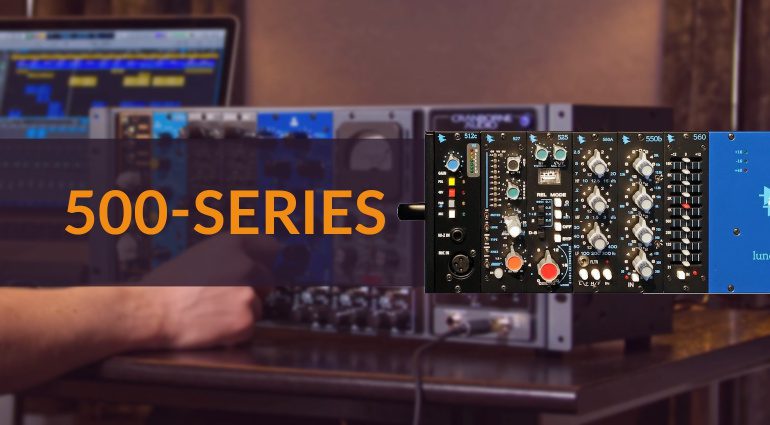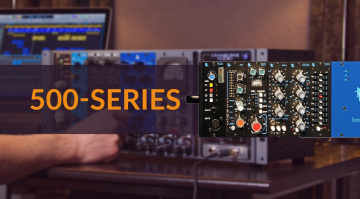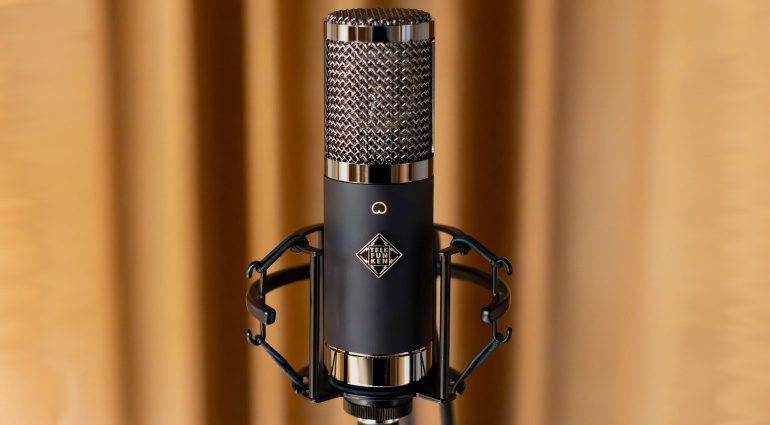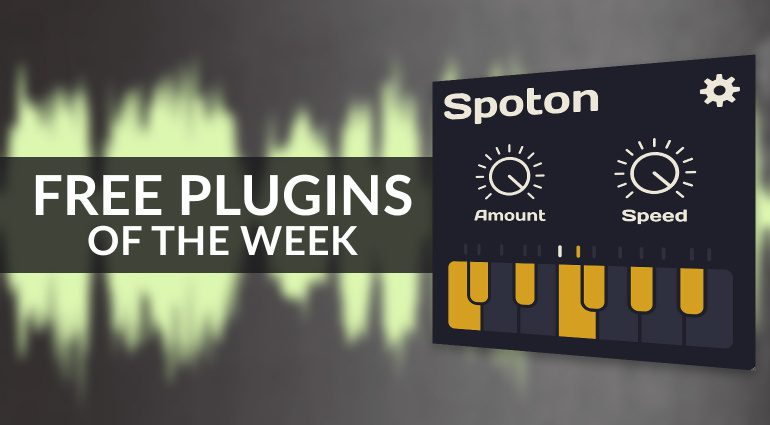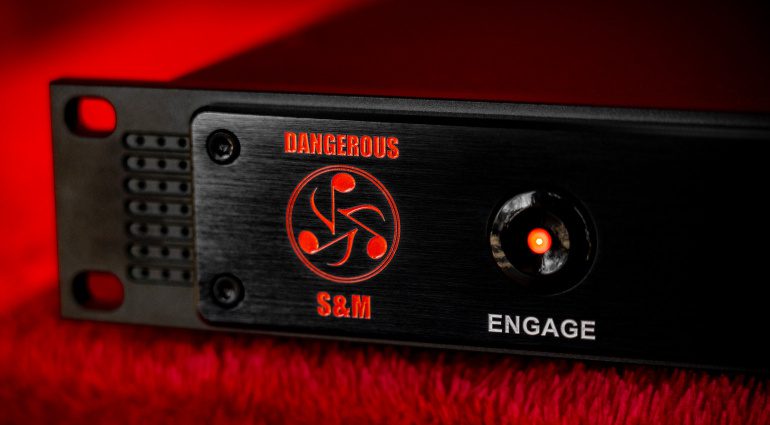We look into 500-series, how to use it, and why it’s such a popular format among producers and engineers throughout the music industry.
500-series was first introduced by audio manufacturer API within its recording consoles in the 1970s. The modular format was invented by Saul Walker in 1968 and allowed any compressor, preamp, or EQ to be quickly swapped out and replaced when maintenance was required.
In 1978, a company called Datatronix manufactured the first 10-slot API 500-series rack. Soon, others would follow, and in the 1980s, Aphex developed one of the first portable 500-series racks to be referred to as a “lunchbox“.
What is 500-series?
Slowly but surely, the convenience of the format began to catch on with producers as well as recording and mixing engineers. The fact that you could carry your favourite channel strip from session to session at different studios made all the difference.
In 1985, API began producing its own line of 500-series chassis ranging from two, six, and 10-slot models. In addition, the American manufacturer owns the Lunchbox trademark and has become the standard for all manufacturers producing modules.
What are the advantages of the format?
For starters, the compact size of the modules makes them perfect for home studios. As a performing artist, the ability to take your recording channel on the road ensures that the integrity of your sound is maintained at any live show.
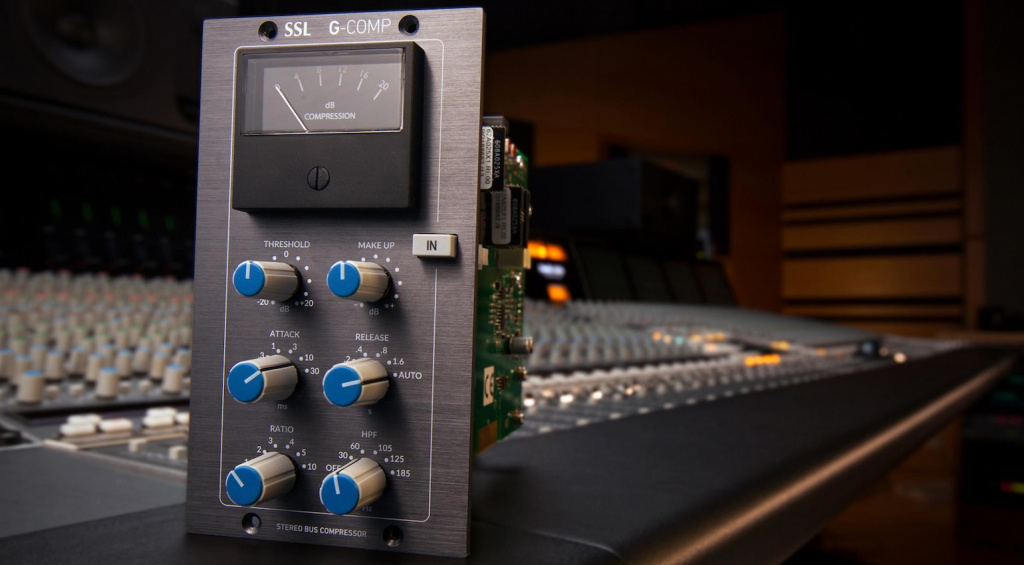
In addition, many modules you’ll find are simply smaller versions of existing 19-inch rack gear. This gives you a portable and more affordable option for essential tools for tracking and mixing.
The main advantage is of course the level of analogue processing you get for the price. Although dual-slot modules can cost over $2500 in some cases, this is often still less than half the price of the 19-inch rack versions.
500-series Chassis
The 500-series chassis is available today in many shapes and sizes ranging from two to eleven slots, and some are also 19-inch rack-compatible. Due to the requirements of different modules, some more high-end brands like Mercury provide more power to ensure stability.
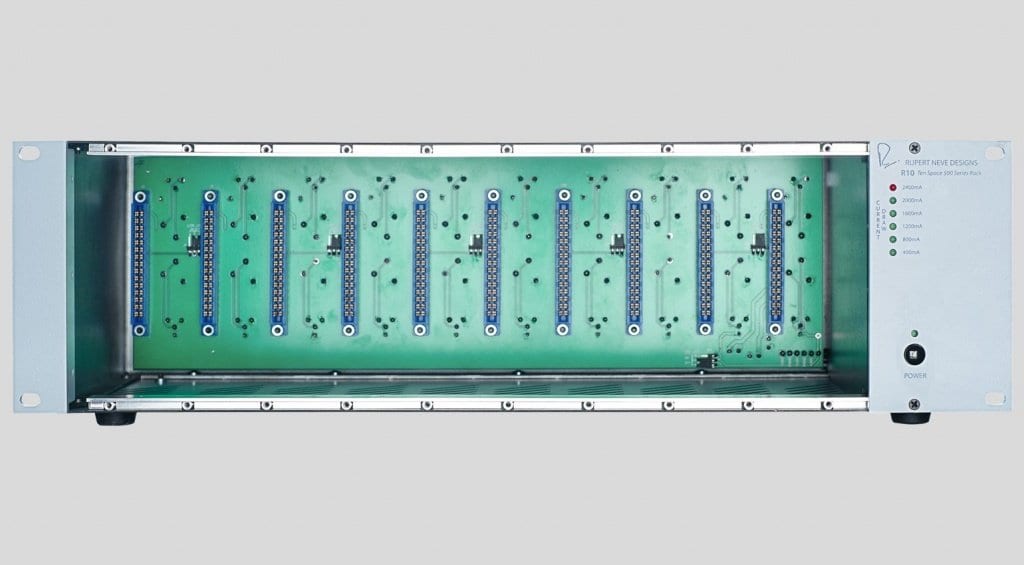
For the very same reason, other Manufacturers like Manley won’t delve into 500-series designs as the format doesn’t provide enough current for their high-voltage tube schematics. However, there are other manufacturers like Crane Song that produce outstanding tube-based modules.
In addition, other manufacturers like Cranborne Audio and WesAudio have incorporated some innovative features like ADAT and DAW control into chassis designs. Meanwhile, some designs provide DB-25 outputs, making it easy to wire into a patchbay.
Budget Modules
In the past, the software vs hardware debate was often decided due to the massive price difference. However, this is no longer as much of a factor, as premium plugins cost around $300 which is the same price as many entry-level modules.

Yes, the cost of the chassis is considerable – a 6-slot API Lunchbox goes for over $600. However, having even a single channel strip of analogue processing during tracking and mixing is a huge advantage.
In the $300-$400 range, you can find some excellent preamps, EQs, and compressors from SSL, Harrison Audio, dbx, Trident, and Cranborne Audio.
Premium Modules
From mastering compressors to Pultec EQs, 500-series modules can provide some of the most pristine audio processing available. You’ll find dual-slot stereo bus processors, capable of shaping your final mixdown and giving it that cohesive glue.

As a pro engineer or producer, premium 500-series modules give you access to all the classic sounds at far more affordable prices. This includes Neve 1073 and API preamps, vintage-style console EQs, and 1176 compressors for tracking and mixing.
The level of financial investment is considerable, but the modules maintain their value on the second-hand market which reduces the risk. This makes it worthwhile for engineers to have a lunchbox with their favourite master bus effects.
Using 500-series for Live Sound
If you’re an engineer who tours with a band you can benefit from the versatility of using 500-series modules in your rig. For example, a pair of vocal channel strips can ensure that your lead and backing vocals sound consistently good at any venue.

Even acts who tour with a digital live console can benefit from using modules. For starters, they offer discrete mic preamps or bus compressors to add punch and cohesive clarity to your overall sound.
In addition, you can find creative effects like reverbs to use on your mixer’s return tracks. This can add depth to vocals, synths, and other instruments in your mix.
More Information:
*Note: This article contains advertising links that help us finance our site. Don’t worry: the price for you always stays the same! If you purchase something through these links, we receive a small commission. Thank you for your support!
Image Sources:
- Rupert Neve R10 500 Series Rack: Rupert Neve Designs
- Meet the new Harrison 32Cpre+, MR3eq, and Comp 500-series modules: Harrison Audio
- DOCtron IMC-500 brings Stimming’s Mastering Chain to 500-series: DOCtron
- AMS Neve RMX16 500 series reverb: AMS Neve

